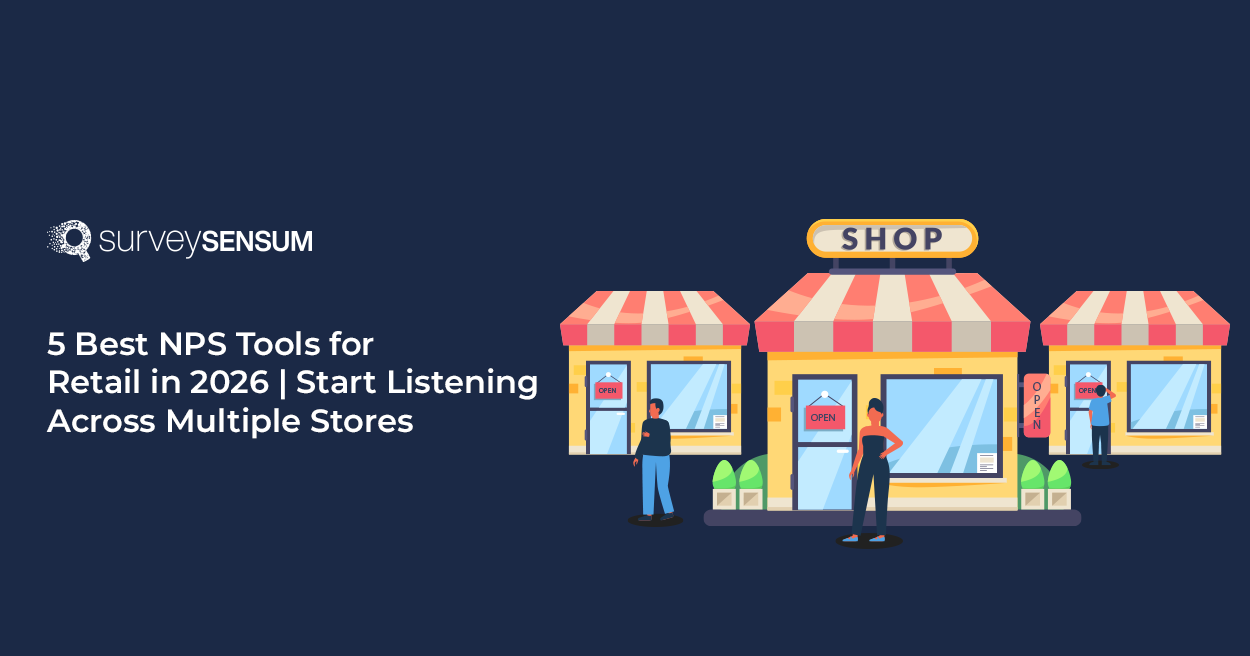


According to a recent study, banks could expect to experience a 27.5% growth rate simply by increasing their customer experience by 10%.
This shows that going the extra mile to create a seamless, hassle-free, and memorable experience for your customers can significantly impact your revenue growth and also give you an edge in this competitive market.
In an industry where trust is paramount and multiple products and channels, providing an exceptional customer experience that establishes trust and creates a seamless experience across all channels is crucial to retaining customers and fostering financial success.
So, let’s explore best practices and strategies to improve customer experience management in financial services.
Why is CX so Important in Financial Services?
Improving and creating a positive customer experience in financial services is crucial because, unlike other industries, financial services deal with people’s money, which involves a higher level of emotional investment on your customer’s part. So, here’s why you need to take a look at the experiences you are providing them with.
1. Complex Product: Financial services deal with a multitude of complex products and services like home loans, self employed mortgages, different types of savings accounts, credit cards, etc. So providing customers with a clear set of communications, personalized advice, and easy-to-set-up solutions will simplify complexities, and reduce customer frustration and effort.
2. Customer Retention: The financial industry often reports high customer acquisition costs. They have to invest a lot of time and effort and utilize AZ-900 Tests Dumps to train relationship management officers for onboarding new customers, making customer retention even more crucial for them. So, offering a hassle-free, and transparent experience to customers will help you retain them, reduce churn, and ultimately boost your revenue through cross-selling and upselling.
3. Digital Transformation: With the onset of the digital age, customers are also expecting their financial services to move to online mode. So digital agency for financial services offering them a fast, secure, and intuitive digital experience via multiple channels, all the while maintaining the same experience, will ensure the convenience and reliability of your brand.
Now that the “why” is well understood, let’s now focus on the “how”.
How To Enhance Customer Experience Management In Financial Service?
First of all, the core to offering a positive customer experience in any industry is to take a “customer-first” approach. When you keep your customers at the core of everything you do, then only you can understand their pain points and needs and exceed their expectations. So, let’s understand how to do that.
1. Personalization At Every Touchpoint
How often have you received unnecessary loan offers from your bank without ever asking for a loan from them or even expressing any interest even after being a valued customer for years?
This is because most financial organizations don’t have an ideal customer profile to begin with. Having an ideal customer profile helps you understand the customer’s demographic, spending and investment behavior, and other crucial information that will help you give personalized advice. Instead, most of the institutes have profiles based on the spending capacity of the customer and have no idea how to design strategies to create upselling opportunities for different customer segments.
What can you do?
Use customer data to study their saving and investment pattern and behavior. Understand their priorities and look for opportunities to provide them with advice and offers that will suit their needs. Leverage this data to provide them with personalized advice and tailor your services and offers to facilitate that.
Leverage AI capabilities like machine learning and text analytics with SurveySensum, to analyze your customer data, derive insights, and tailor your offerings to exceed customer expectations.
2. From Multiple Channel To Omnichannel Customer Engagement
Your customers can come and go from whichever channel they want, you need to ensure that you are there to meet them via their preferred channels. That means you must move from multiple-channel communication to an omnichannel one.
This also impacts your business growth as companies with strong omnichannel engagement retain an average of 89% of their customers, compared to 33% of customers with weak omnichannel engagement.
So, ensure a seamless experience across all your channels – from in-branch visits to mobile or call-center interactions – all channels should provide the same level of consistency and convenience.
Now, the challenge here is that organizations don’t have the proper tech integrations to create an omnichannel experience. In fact, 46% of organizations do not have integrated technology systems.
For example, you have been enrolled with a bank for years now but have rarely visited it because most of your work gets done digitally. However, you do visit it after 2 years for an urgent deposit and after exiting the bank you receive a message from the bank, welcoming you to their service. Strange, right?
This is because the bank lacks proper tech integration to automate every real-time transaction and customer interaction and has its customer data scattered all over the place. Bringing this segmentation down is important to map your customer journey correctly. So, to create an omnichannel experience you need to integrate customer data on all fronts so that every department, outlet, kiosk, etc – no matter how small or big they are in size – have access to it and can tailor their services accordingly.
3. Proactive Customer Service
Gone are the days when having reactive customer service was more than enough, now customers expect a more proactive service – 71% of customers actually prefer proactive customer support.
Proactive means anticipating issues even before your customers encounter them, in short being ready for every worst possible scenario. So, apart from establishing 24/7 customer support, chatbots, AI assistance, and seamless multiple-channel communication, you also need to ensure that you are being proactive in communicating with your customers. With the help of an AI tool for assistance and seamless multi-channel communication, you also need to ensure that you are being proactive in communicating with your customers.
For example, keep your customers informed about the recent changes in your online portals and they might be experiencing some delays or other issues and encourage them to reach out to you in any case. Or send a survey right after a new customer has enrolled with you. Ask them about their experience, how clearly they were given instructions or advice, how your relationship managers behaved with them, etc, and identify key drivers and areas of improvement from their feedback.
4. Offer Self-Service Options
Did you know that 67% of customers prefer self-service over speaking to a company representative?
Customers no longer want to be dependent on someone else to resolve their issues or manage their finances and technology and this digital age is making it all possible. Customers don’t want to face long wait times just to make a deposit, they can do so by themselves with self-help kiosks, so why not provide them with this independence?
Leverage self-service options like self-help kiosks, mobile apps, and kiosk mode to manage finances, pay bills, make alternative investments, handle online invoices, etc. This will not only boost your customer satisfaction but also free up customer service teams to handle more complex issues, improving operational efficiency.
5. Incorporate Customer Feedback
And we are back to the good old customer feedback!
How can you truly understand what your customer’s expectations are, if you don’t ask them for their input? If you want to improve customer experience, you have to listen to them, and to listen to them you need to ask, gather, and act on their feedback.
Regularly gather feedback from customers via surveys, interviews, etc from multiple channels at every touch point in the customer journey. For example, launch CSAT surveys post-customer service interaction to gauge their satisfaction with your customer service agent and whether or not their issues were resolved. Also, launch churn surveys to understand why your customers left and whether or not they opted for your competitor and why.
Constantly important CX metrics like NPS to gauge customer loyalty and satisfaction with your brand and keep on adjusting your strategies to improve your overall customer experience.
Gather and analyze customer data via multiple channels like emails, messaging, social media, etc, and establish an omnichannel communication with your customers.
Biggest Challenge: Silos in the Organization
Enhancing customer experience management in financial services also requires an understanding of the biggest challenge faced by this industry – breaking down internal silos.
Problem:
These silos occur within organizations when different departments or teams work in isolation, without sharing a unified goal or aligning on customer needs. There are too many departments in any financial organization – from insurance to long-term investments to digital platforms – and there is often little to no consistency between these teams when it comes to CX.
This creates a fragmented customer experience where customers might receive inconsistent messaging or service depending on which department they are dealing with.
For example, a customer might be satisfied with their loan application process but might be facing issues with their digital marketing strategy due to a lack of coordination between these two departments.
Solution:
1. Shift from transactional metric to holistic journey
The solution is pretty simple is – break down the silos within the organization and act as a single and unified entity, managing and optimizing experiences across departments.
For this, financial organizations need to shift their focus from transactional metrics to holistic customer journeys. Traditionally, financial organizations focus on measuring their own transactional performance. For example, they look at how quickly the issues were resolved or how many customers enrolled and ignore the performance of the whole organization and how it might impact their own performance.
Looking at the customer journey as a whole gives you insights into the overall experience of your customers – from the moment they first interact with the brand to the ongoing relationship.
2. Unified CX strategy
This goes without saying that to break silos within financial organizations, they need to align their teams around a unified CX strategy, ensuring that all departments are working towards a common goal and have access to the same customer data and insights.
Conclusion
By creating personalized experiences, establishing omnichannel communication, offering self-service options, listening to the voices of customers, and creating a unified CX strategy, you can create and enhance your customer experience management in financial services.
However, to achieve success in all of these strategies, you need a holistic customer experience management tool, like SurveSensum. This tool allows you to gather customer data from multiple channels, establishing omnichannel communication. It also analyzes customer data with its AI capabilities like text analytics software and identifies key drivers and areas of improvement for you to take prioritized action.














